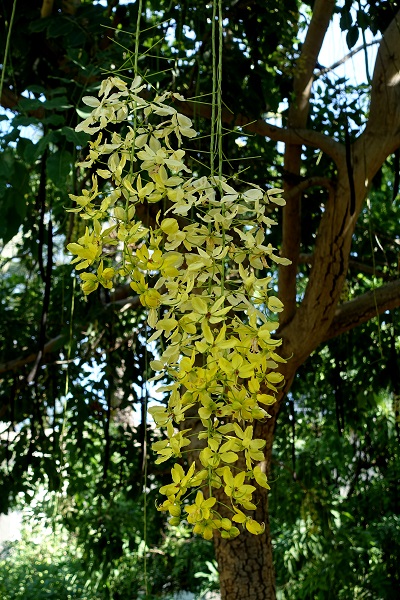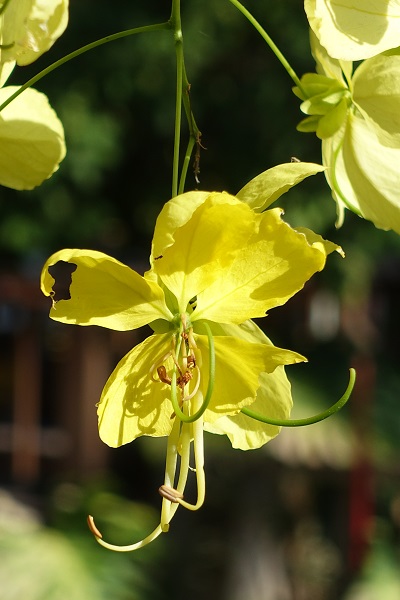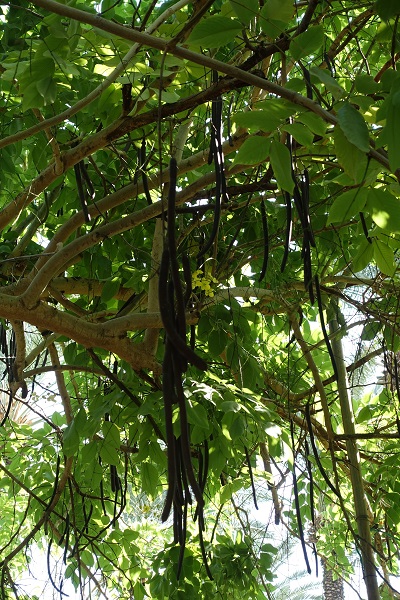Hebrew: כסיית האבוב, Arabic: خيار شمبر
| Scientific name: | Cassia fistula L. | |
| Synonym name: | Bactyrilobium fistula Willd.,Cassia bonplandiana DC.,Cassia excelsa Kunth, Cassia fistuloides Collad., Cassia rhombifolia Roxb., Cathartocarpus excelsus G.Don, Cathartocarpus fistula Pers., Cathartocarpus fistuloides (Collad.) G.Don, Cathartocarpus rhombifolius G.Don | |
| Common name: | Golden rain tree | |
| Hebrew name: | כסיית האבוב | |
| Arabic name: | khiār shambar, خيار شمبر | |
| Family: | Fabaceae, Mimosaceae, שיטיים |

|
| Life form: | fast growing, medium sized, deciduous tree | |
| Stems: | Stembark contains lupeol, beta-sitosterol, and hexacosanol | |
| Leaves: | Alternate, pinnate, 30-40 cm long, with 4-8 pairs of ovate leaflets, 7.5-15 cm long, 2-5 cm broad, entire, the petiolules 2-6 mm lon | |
| Inflorescence: | Pendulous racemes 20-40cm long | |
| Flowers: | Yellow, 5 petals, stamens 10, the upper ones sterile, the 4 lateral ones with short filaments and basal pores, the lower ones fertile with pores at both ends and filaments S-shaped | |
| Fruits / pods: | cylindrical pods with the seeds imbedded in a stick brown pulp | |
| Flowering Period: | June, July, August | |
| Distribution: | Coastal area, Shfela (lowland region in south-central Israel), the Jordan Valley and the Arava | |
| Chorotype: | India | |
| Summer shedding: | Perennating |

Derivation of the botanical name: Cassia, Latin cassia, from Greek kasia, from Hebrew q'tsi-ah "cassia, meaning to cut off or strip off bark. fistula, like a pipe.
Cassia fistula, the Golden shower is an important medicinal plant in addition to its ornamental use. Several reports on the hepatoprotective, antioxidant, anti-inflammatory, antitussive, antifungal, antibacterial, nematicidal, wound healing, antifertility, hypocholesterlamic, laxative, antifertility and antitumor activities have been extensively published. Cassia fistula has many important utilities such as medicinal, food, coagulant, biosorbent and as a natural dye source apart from its use as a beautiful ornamental tree. 

|